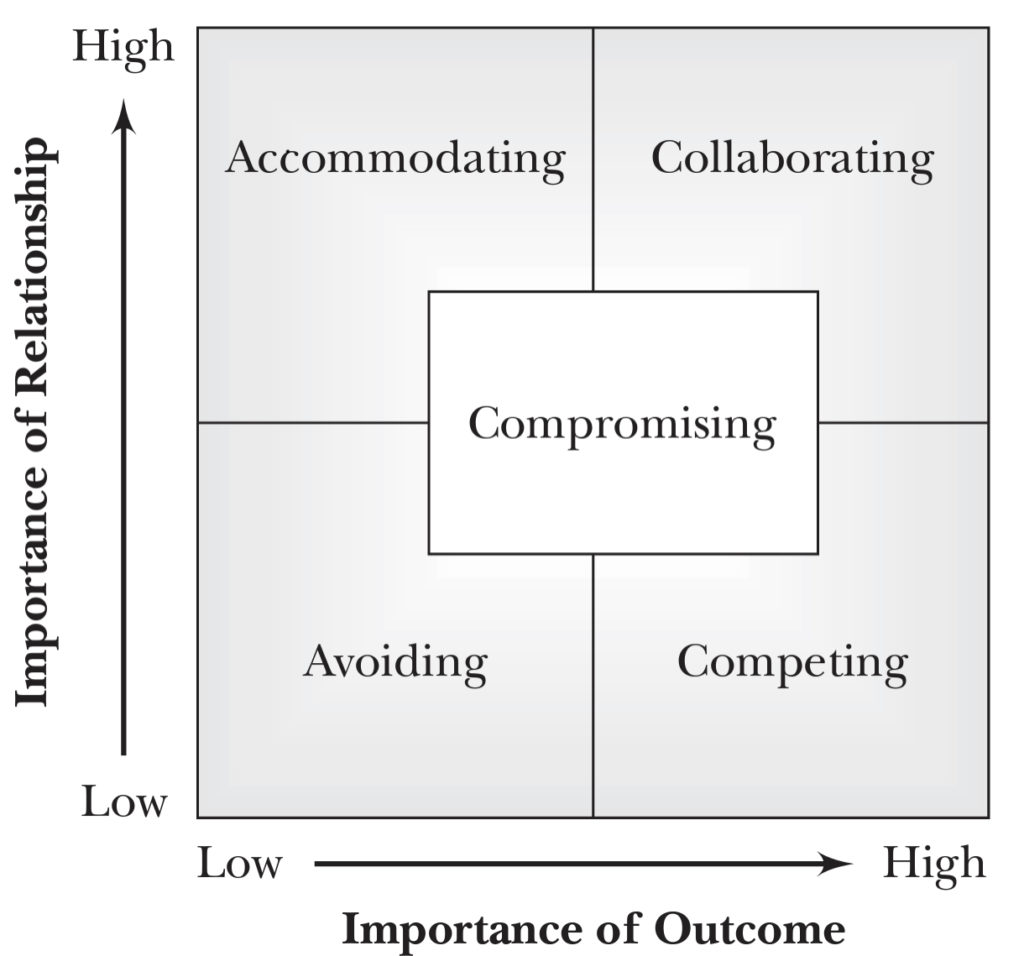(Excerpt from Mastering Business Negotiation by Roy Lewicki and Alexander Hiam)

Avoiding (lose-lose). In this strategy, shown in the lower left of the diagram, the priorities for both the relationship and the outcome are low. Neither aspect of the negotiation is important enough for you to pursue the conflict further. You implement this strategy by withdrawing from active negotiation or avoiding negotiation entirely.
Accommodating (lose to win). This strategy is represented in the upper left of the diagram, where the importance of the relationship is high and the importance of the outcome is low. In this situation, you back off your concern for the outcome to preserve the relationship; you intentionally “lose” on the outcome dimension in order to “win” on the relationship dimension.
Competing (win-lose). The lower right of the diagram represents high concern for the outcome and low concern for the relationship. You use this strategy if you want to win at all cost and have no concern about the future state of the relationship.
Collaborating (win-win). The upper right part of the diagram defines a strategy where there is a high priority for both the relationship and the outcome. In this strategy, the parties attempt to maximize their outcomes while preserving or enhancing the relationship. This result is most likely when both parties can find a resolution that meets the needs of each.
Compromising (split the difference). In the middle is an area we call a compromising, or “satisficing,” strategy. It represents a combination approach that is used in a variety of situations. For example, it is often used when the parties cannot achieve full collaboration but still want to make some progress toward achieving outcome goals or take some actions to preserve the relationship. It is also often used when the parties are under time pressure and need to come to a resolution quickly, or do not have the energy to work toward a fully collaborative agreement. Each party will give in a bit to find a common ground.
